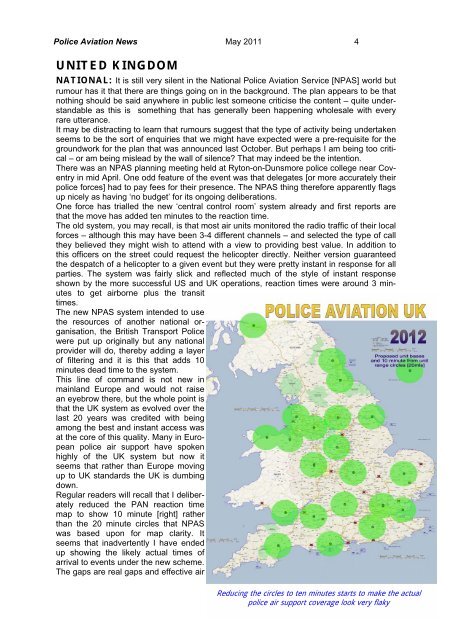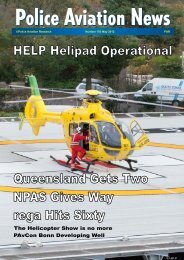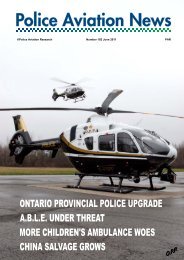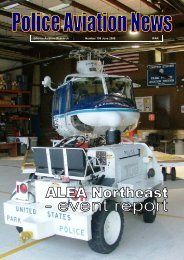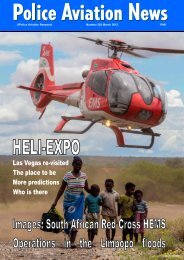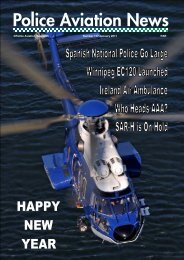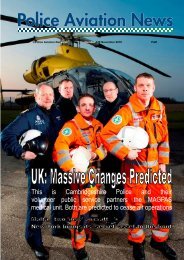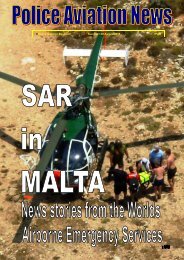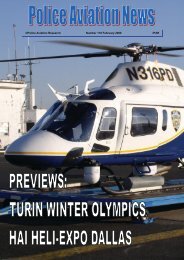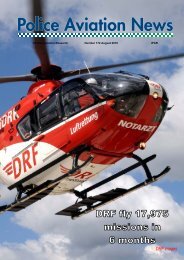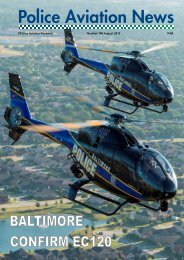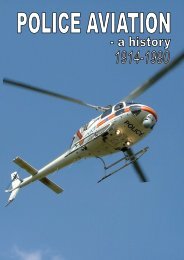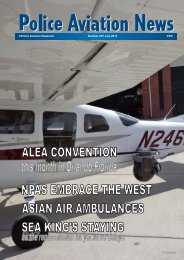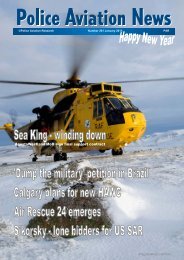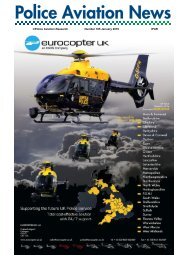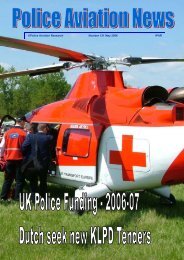attractive options - Police Aviation News
attractive options - Police Aviation News
attractive options - Police Aviation News
You also want an ePaper? Increase the reach of your titles
YUMPU automatically turns print PDFs into web optimized ePapers that Google loves.
<strong>Police</strong> <strong>Aviation</strong> <strong>News</strong> May 2011 4<br />
UNITED KINGDOM<br />
NATIONAL: It is still very silent in the National <strong>Police</strong> <strong>Aviation</strong> Service [NPAS] world but<br />
rumour has it that there are things going on in the background. The plan appears to be that<br />
nothing should be said anywhere in public lest someone criticise the content – quite understandable<br />
as this is something that has generally been happening wholesale with every<br />
rare utterance.<br />
It may be distracting to learn that rumours suggest that the type of activity being undertaken<br />
seems to be the sort of enquiries that we might have expected were a pre-requisite for the<br />
groundwork for the plan that was announced last October. But perhaps I am being too critical<br />
– or am being mislead by the wall of silence? That may indeed be the intention.<br />
There was an NPAS planning meeting held at Ryton-on-Dunsmore police college near Coventry<br />
in mid April. One odd feature of the event was that delegates [or more accurately their<br />
police forces] had to pay fees for their presence. The NPAS thing therefore apparently flags<br />
up nicely as having ‘no budget’ for its ongoing deliberations.<br />
One force has trialled the new ‘central control room’ system already and first reports are<br />
that the move has added ten minutes to the reaction time.<br />
The old system, you may recall, is that most air units monitored the radio traffic of their local<br />
forces – although this may have been 3-4 different channels – and selected the type of call<br />
they believed they might wish to attend with a view to providing best value. In addition to<br />
this officers on the street could request the helicopter directly. Neither version guaranteed<br />
the despatch of a helicopter to a given event but they were pretty instant in response for all<br />
parties. The system was fairly slick and reflected much of the style of instant response<br />
shown by the more successful US and UK operations, reaction times were around 3 minutes<br />
to get airborne plus the transit<br />
times.<br />
The new NPAS system intended to use<br />
the resources of another national organisation,<br />
the British Transport <strong>Police</strong><br />
were put up originally but any national<br />
provider will do, thereby adding a layer<br />
of filtering and it is this that adds 10<br />
minutes dead time to the system.<br />
This line of command is not new in<br />
mainland Europe and would not raise<br />
an eyebrow there, but the whole point is<br />
that the UK system as evolved over the<br />
last 20 years was credited with being<br />
among the best and instant access was<br />
at the core of this quality. Many in European<br />
police air support have spoken<br />
highly of the UK system but now it<br />
seems that rather than Europe moving<br />
up to UK standards the UK is dumbing<br />
down.<br />
Regular readers will recall that I deliberately<br />
reduced the PAN reaction time<br />
map to show 10 minute [right] rather<br />
than the 20 minute circles that NPAS<br />
was based upon for map clarity. It<br />
seems that inadvertently I have ended<br />
up showing the likely actual times of<br />
arrival to events under the new scheme.<br />
The gaps are real gaps and effective air<br />
Reducing the circles to ten minutes starts to make the actual<br />
police air support coverage look very flaky


